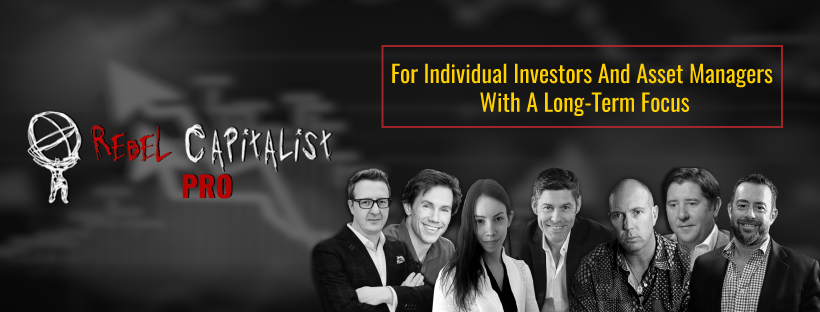Jesse Felder is the founder, editor, and publisher of The Felder Report, co-founder of a multi-million-dollar hedge fund firm in Santa Monica, California, and a contributor for Real Vision and Macro Voices.
He is a macro expert and former Wall Street insider taking the less traveled financial road.
In this interview, we talk about the Buffet Indicator, the Cape Ratio, the future long term bear market, the US massive debt problems, the US dollar potentially losing reserve currency status, precious metals, and more!
'The reason that the Fab 5 stocks and growth stocks in general have done so fabulously well centers on falling real interest rates. The future price disparity is subject to an ongoing decline in real rates, which to my mind, have seen their best days.' https://t.co/DfuJFOGYOT
— Jesse Felder (@jessefelder) July 14, 2020
Jesse Felder's Background

George: All right guys, it gives me a great deal of pleasure to bring someone to The Rebel Capitalist Show that I have a tremendous amount of respect for.
He's someone that I've seen on Real Vision, I've been listening to him for a long time on MacroVoices. He has his own podcast. He is a twin fit superstar. That is for sure.
His name is Jesse Felder. Jesse, welcome to The Rebel Capitalist Show.
Jesse Felder: Hey George, thanks for having me.
George: All right, now for those of my viewers who might not know your full backstory, it's very fascinating. Can you get us up to speed on that?
Jesse Felder: Yeah sure. Right out of college I went to work for Bear Stearns in the L.A. office.
They sent me back to New York to meet people back there, I got to the floor of the New York Stock Exchange, met their floor traders, all that.
I started out as a ticket runner in the L.A. office basically just running tickets to the trading desk for a couple of guys.
I found a guy who was running a hedge fund inside of Bear Stearns and I kind of gravitated towards working for him and learned a ton.
We ended up leaving and starting our own hedge fund firm in Santa Monica where we started with about 100 million under-management and grew it eventually to I think 14, 15 billion.
By 2006-07, I quit the firm in 2000, really right at the peak of the .com mania. I just kind of had the program in a variety of different ways and started at that point doing my own thing and it's what I've kind of been doing ever since.
George: Okay. Now you're just able to think very clearly in one of my favorite places on earth and that is Bend, Oregon.
Jesse Felder: It's a great place to live, yeah. When we were leaving L.A., my son was born, he was a millennium baby, he was born '99, November '99.
We said, “Where do we want to raise a family?” We looked at a bunch of different places and with Bend, I thought, “Okay, this is a great place for raising a family and where I'd just love to live.” So, I've been here for just over 20 years.
How The Buffet Indicator And Cape Ratio Work

George: Now let's go to your blog. If anyone is wondering what to read over the next year, two years, whatever, what to read right now, you got to check out Jesse's blog, it is absolutely incredible.
One of the things I love the most about it is I'm someone that's extremely busy, and your blog posts are just quick, bam, right to the point.
You got a couple of charts, and you just hit some bullet points and boom there you go.
So it's easy to digest a lot of information quickly but let's go over your most recent blog post, I think it was reading the Buffett Indicator because I've done a lot of videos on that and I'd just like to hear you expand as much as you'd like to on those charts that you had in there on the whole blog post.
Jesse Felder: Sure I think it was 2001, around the .com mania, Buffett wrote a couple of pieces for Fortune Magazine, one in late '99 and once again in I think early 2001.
This one comes from a 2001 piece where he talked about this indicator being the best single indicator to try to understand equity valuations at any given moment. Essentially it's the total value of the stock market relative to the total size of the economy.
I look at it as a price to sales measure for the whole stock market but when you look at this thing, you can see in the .com mania, it just went off the chart.
We got pretty expensive in the late 60s, '67, '68, but the 2000.com mania, this measure soared far above anything we'd seen since the 1929 stock market peak.
My data doesn't go back that far but I've seen studies that show essentially the 2000 peak was very similar to 1929.
But what's happened is valuations have actually breached that peak in 2000 and the stock market has become more expensive in the last couple of years than it was even at the peak of the .com mania.
With the stock market rally and falling GDP at the same time, we've seen this valuation metric go back or surpass its all-time highs. So stocks are extremely overvalued, not all measures would say that.

You'd look at trailing PDs and other things that people like to look at but to me this measure is the best.
The reason it's so good is that it has a high negative correlation with forward 10-year returns in the stock market so when you turn this measure upside down, it's very highly correlated with forward 10-year returns and so right now.
Basically this measure is saying returns should be negative for the stock market for the coming 10 years which it's rarely given such a message in like I said the 2000 peak, it forecasts a -2% per year return and it's exactly what we saw from 2000 to 2010.
I think the message the stock market is sending us right now is that stocks are extremely overvalued.
George:
How does this indicator work in a world where a lot of these corporations are making more and more money overseas?
Jesse Felder: Well, My friend John Hussman has done some work where he basically includes foreign revenues of domestic companies and it doesn't change the measure at all really.
— John P. Hussman, Ph.D. (@hussmanjp) July 13, 2020
It's a very minor change and so that's what some people would argue is GDP doesn't include that.
But actually this measure is GNP, gross national product, so it really does show the revenues earned by domestic corporations.
I guess that's the difference between GNP and GDP, most people look at the market cap to GDP but Buffett said he looks at GNP. So that's kind of just one of the minor differences there.
So I would say this measure by using gross national product, it does include foreign revenues generated by domestic owners.
George:
Okay, got it. How do you use the CAPE ratio in addition to this Buffett Indicator?
Jesse Felder: The CAPE ratio is a really good one. Robert Shiller won a Nobel prize for a lot of the work in developing the CAPE ratio.
Bonds that guarantee a yield based on GDP growth are an experiment worth trying, says our columnist https://t.co/o6pkIqcI64 via @WSJ
— Robert J Shiller (@RobertJShiller) July 13, 2020
To me, the CAPE ratio is good because usually people just look at a simple price to earnings ratio, one year's worth of earnings relative to the current price, whether that's forward earnings or last year's earnings.
The problem though is a lot of the times you can be looking at peak earnings and if you look at any cyclical stocks like individual stocks, you usually want to buy them when they're really expensive and sell them when they're really cheap.
And why would that be? It's because the earnings cycle is such, that when they have really good earnings, you're near the peak of a cycle.
So those stocks deserve to trade at a kind of a cheaper valuation on those peak earnings and at the bottom of the cycle earnings collapse so you should be comfortable paying a high multiple in that environment and that's usually what it looks like when those types of stocks bottom.
So Shiller wanted to develop an earnings measure that would include a full cycle worth of earnings. So the cyclically adjusted price-earnings ratio is a 10-year average of earnings.
The trouble with the CAPE ratio that I have today is that it shows the last 10 years worth of earnings but that doesn't include a recession anymore.
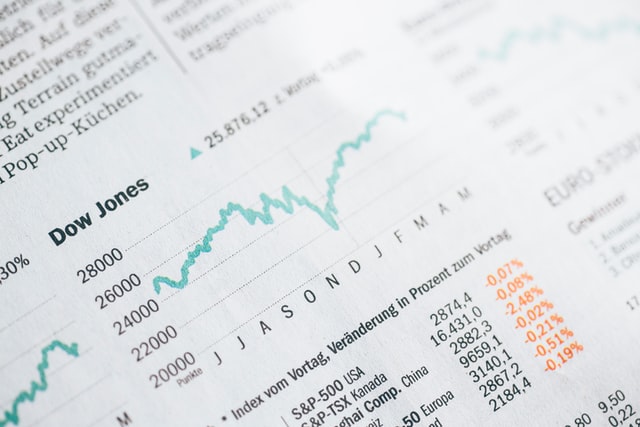
We just dropped off that 2009-10 earnings recession, so now we only show stocks are not as extremely overvalued as something like the Buffett yardstick because it only shows earnings during a cyclical uptrend.
It doesn't actually show a recession anymore so to me that measure right now is not quite as valuable as some like the Buffett measure.
George: Okay, and I know going back to your recent interview with Keith McCullough which I would strongly suggest anyone listening to if they get the opportunity.
I guess his guys look at the same indicator with corporate debt included and if you look at how expensive the market is or how expensive the CAPE ratio is telling us, then you add on corporate debt, then it really looks ugly.
Jesse Felder: Yeah, so one of my favorite measures, when I’m looking at individual stocks, would be something like enterprise value to EBIT, so enterprise value would be the equity value plus the debt value.
You know my friend Toby Carlisle is doing a bunch of great work.
Hi! I run a deep-value firm called Acquirers Funds® https://t.co/nw0zlMPADE
We implement the Acquirer's Multiple® in a liquid, and tax- and capital-efficient way: https://t.co/Yc28lQVCDa
Read the book: https://t.co/BSDM09iN7r
Hear the podcast: https://t.co/l1bykz1OgH pic.twitter.com/6f3Aj0bOKs
— Tobias Carlisle (@Greenbackd) May 16, 2019
That's how an acquirer would look at buying a company because when you buy a whole company, you either get the cash on the balance sheet or you have to assume the net debt on that company's balance sheet.
So it really makes sense to integrate that into your valuation approach and you can do that with the Buffett yardstick also.
Something I look at, you basically just take all the debt securities out there, add them to all the equity securities, and divide by GNP or as my friend John Hussman does, use gross value added which is kind of a revenue metric for all of corporate America.
That's really important because corporate leverage is off the charts this cycle, so if you're not looking at debt, then a lot of these stocks in the broad market in fact can look cheaper than it otherwise would.
George: Yeah, AT&T comes to mind and I watch Real Vision all the time and I know there's kind of like five main stocks that just have an incredible amount of debt on their balance sheet right now.
The Reason Why You Might Want To Fight The Fed
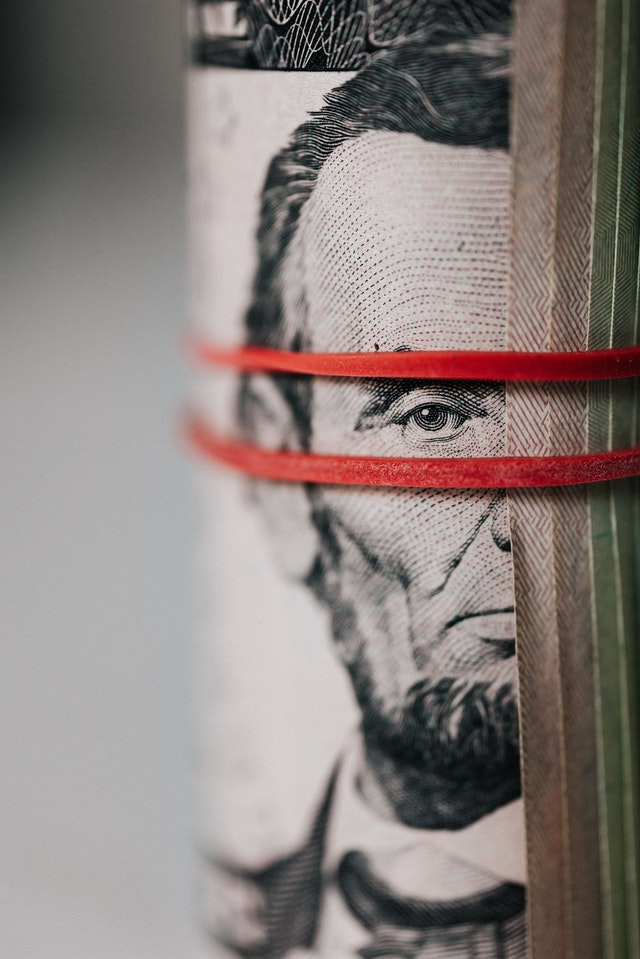
George:
Going back to your blog, you had a post on why this time you might want to fight the Fed. So can you explain that a little further?
Jesse Felder: Yeah, on the blog, I've written essentially two posts relative to this topic. The one that I titled Fights the Fed was really in regard to these issues that are now kind of behind a lot of the social unrest.
I mean a lot of it is related to Black Lives Matter and for good reason, but I think a lot of it is just due to other types of inequalities, wealth inequality, income inequality, inequality of opportunities.
There's a lot of reasons for that. One is we've changed our regulatory framework so we don't pursue antitrust as strongly as we did in the past.
The Chicago School of Economics has argued successfully to the government suggesting that corporate consolidation is not really a problem.
But when you look at why labor share of income is at record lows and staying there, a lot of that has to do with corporate consolidation and corporations just gaining much more of an upper hand on labor.
Part of that is also due to globalization, offshoring of jobs. With that huge new supply of labor coming in as a part of globalization, that's given labor much less bargaining power.
I think people overlook the role that the Fed has played in all of this too, in that the Fed has been tasked with creating full and sustaining full employment, but their only tool for doing that is through the capital markets.
Personally I believe it's impossible to try and boost labor at the expense of capital by only doing it through the capital markets.
That's exactly what the Fed is trying to do, they have essentially been boosting capital at the expense of labor under the guise of doing it for the labor class.
People need to look at the Fed's role here because it's been huge.
For so long, for the last 10 years, they've told us we're trying to create a wealth effect in the economy, but we have no role in wealth inequality. It's incredibly disingenuous.
I think something important is to look at the sociological effects of Fed policy, but also I've written too about liquidity.
People think don't fight the Fed when they're injecting so much liquidity into the markets, and the trouble with that is liquidity is not just what the Fed's doing, It's also what the Treasury is doing.
And the Treasury has to meet the needs of the federal government. From the standpoint of net liquidity it makes much more sense to look at, “Okay, the Fed is printing let's say a billion dollars.
If the treasury is issuing less than a billion in net new debt, then that's net liquidity that's going to come into the financial markets.”
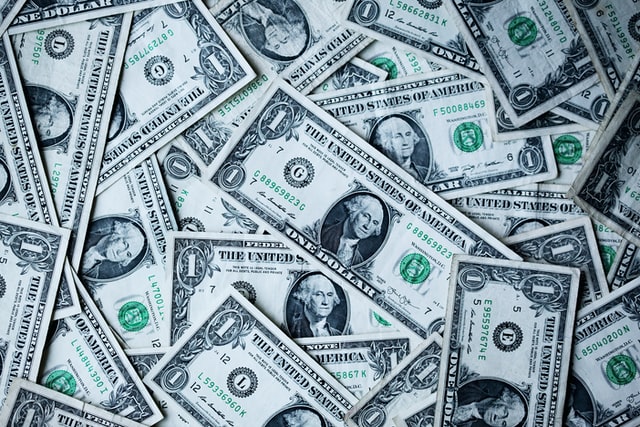
Once the Treasury starts outpacing Fed activity, that positive liquidity can actually turn into negative liquidity where the Treasury begins to suck up all the liquidity the Fed is putting into the market and then some.
We're actually at that point now where I think the run rate, the Fed balance sheet has expanded $60, $70 billion a week, and now the Treasury has been needing over $100 billion, issuing $100 billion per week over the last few weeks.
So we've actually entered that period of net negative liquidity for the markets which is not positive that most I think traders assume it to be right now.
The Treasury Issuance Is Expanding And It Could Lead To trouble
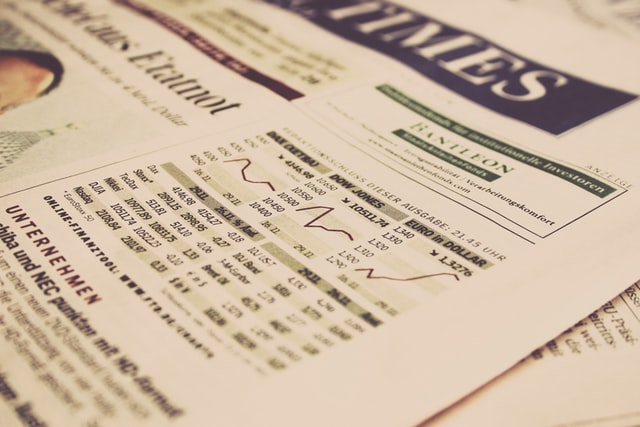
George:
Can you explain to my viewers, Jesse, what would happen if the Fed didn't step in and buy those treasuries?
I mean I know they go through the primary dealers and it's kind of a shell game to a certain extent but if the Fed didn't provide as much liquidity as they do for those treasuries.
Jesse Felder: Well to me it's simple supply and demand. There's the supply of financial assets that are out there and then there's the demand on the part of investors to buy them.
The supply of those financial assets changes based on a few different factors. Most importantly over the last 10 years, we've seen net buybacks by corporations that's [inaudible 00:14:22] reduced the supply of equities.
That's also changing right now where we're seeing the largest issuance from corporations selling stock in the open market in a long, long time.
Treasury issuance has a big role to play in this too. When Treasury issuance is expanding, that's a new financial asset supply coming into the market. So if the demand is not there to meet that new supply, then prices have to go down and that would mean interest rates going up, which means higher cost of capital for corporations and it also means a higher risk-fee rate that's competing with equities.
If the Fed is not in there soaking up this excess supply, then all else being equal, prices have to go down for risk-free assets which mean risk assets probably have to go down too.
George: Yeah, and the government is going to be paying a higher price on their debt which would be very problematic, to say the least.
Jesse Felder: Yeah. There have been a few economists talking about the potential for a fiscal crisis going forward and I think that that's an underrated risk right now too.

There's a difference between the QE that's happening now and the QE that's happened over the last 10 years.
Over the last 10 years, it was let's buy up treasuries so that investors holding these treasuries have to go into riskier assets.
They have to go buy corporate bonds, go buy stocks, and boost the prices of those assets to try and create a wealth effect to make people feel wealthier and boost the economy.
I think since the crisis that we had last fall in the repo markets, the Fed had to come in, not trying to support the economy, but to just soak up this excess supply, that there's not enough demand for the new Treasury issuance out there. So the Fed has been forced to monetize the debt.
I wrote about this back in the fall, this is just an outright monetization of the debt and it's a very different type of QE than what we saw in the 10 years prior.
George: Yeah, it's interesting. I've watched some videos that the Bank of England has uploaded to YouTube and they just come right out and say, “Listen, the goal of quantitative easing is to increase asset prices,” and for some reason, the Fed is a lot less transparent let's say.
Why Dollar Charts Are The Most Relevant?

Jesse Felder: The Fed actually was pretty transparent early on in QE1, 2.
They were talking about wealth effects but it's important that the message has changed recently and the first market comment I wrote this year was this is going to be the year to watch the dollar.
Because if this narrative changes, that QE is not necessarily to support the asset markets, now the Fed is beholden to the Treasury.
We're now seeing fiscal dominance where the Fed is forced to come in and monetize the debt because if they didn't, there would be a fiscal crisis.
As that narrative starts to take hold and grow like I think it will, the outlet for a lot of these activities will be the dollar, so I think the dollar is the most important chart in the world right now to pay attention to.
If people start coming around to this idea that the Fed has to monetize the debt because there's no other way to pay for it, there's no demand out there around the world to buy treasuries, then the dollar will potentially face another major bear market.
I mean like a 30, 40% decline over the next several years which would have major implications for a lot of different things.
George: Jesse, when you're thinking about inflation, I'm assuming you're talking about consumer price inflation because there are so many areas where inflation can show up.
But in my mind, I always look at base money so the Fed is what's caught printing bank reserves.
Then in order for those bank reserves to actually have an effect on M2, the broad money, then the retail banks have to do something or the government has to just do this massive deficit spending.
-
So, how do you see that in your mind, as far as the role that the Fed plays with base money and the role they have played in the past with M2, if there is causation or correlation?
Then moving forward…
-
Do you think they might bypass some of the rules, kind of “wink, wink nod” to have more control over M2, and therefore, maybe even create this inflation in order to kind of bailout the government from their debt load?
Jesse Felder: I think that's exactly what's going on right now.
The Fed’s greatest fear is deflation, and inflation is highly correlated to GDP, at least core inflation is. This is the worst quarter of GDP we've had in the midst of right now, since the Great Depression.
So you're seeing core inflation respond it is dropping like a rock and I think the Fed sees it as their duty to, especially with as much debt as we have at a corporate level, at a government level, at a consumer level, not allow for deflation.
So this liquidity push that they've made is the biggest liquidity injection in the history of the Federal Reserve.
To me, yes, they see the risk of deflation and of the economy going into kind of a deflationary spiral and have taken steps to ensure that we'll get inflation going forward.
I do think over the short run we are going to see inflation drop off.

To me it's fascinating how this works because there are a lot of longer-term trends that I pay attention to that are pointing towards inflation over the next five years starting to take off again and the Fed is only going to exacerbate those right now.
Paul said low inflation is the greatest challenge of our time, something similar to that maybe a year ago.
Paul Volcker had to raise short rates to 20% to kind of break the back of inflation. I think Powell sees himself as the reverse Volcker, it's my job to get inflation going again and I think that's exactly what they're doing.
George:
Do you think they'll try to just peg the yield curve, let inflation run hot, and then try to somehow finagle the CPI numbers to make it seem like we're not running at 7, 8, 9, 10% inflation?
Jesse Felder: Well the CPI numbers are already finagled. Like if you calculated CPI the same way we did in 1990, we're already looking at 5, 6% inflation right now.
So with hedonics and all these other things and owner's equivalent rent, the CPI numbers are already completely fooled with.
I don't know if they'll try and fool with them any more than that but I do think that they're trying to get inflation to a place where it's going to sustain itself higher and even once it does start taking off kind of allowing an inflationary mindset to take hold among consumers.
That's really what I think they want to happen to ensure that disinflation is not going to become a problem.
The Inflationary Mindset Is Critical To Inflation Itself

George: Yeah, I know you talked about that with Keith briefly.
Could you expand on how important psychology is to inflation and I'm assuming it's important because of velocity?
Jesse Felder: Inflation is very difficult for economists or anyone to understand, where it comes from.
A lot of people thought we would have had inflation over the last 10 years that would have really taken off as a part of all the money printing.
It really was only inflation in asset prices and it didn't make itself visible at least in the economy and consumer inflation. I Do think the inflationary mindset is really, really critical to how inflation operates.
If people believe prices are going to be lower or at least the same a year from now, they have no incentive to go spend it by today. In fact, they have an incentive to wait. If they think prices are going to be lower a year from now, you have an incentive to wait.
The longer you wait, the less money you're going to pay, but.
When an inflationary mindset takes hold, it becomes self-fulfilling because people think “prices are going to be higher a year from now so I better hurry up and buy today” and that increased demand from an inflationary dynamic, creates a rise in prices on its own and a self-reinforcing inflationary dynamic.
That is what the Fed is thinking that either one of those mindsets can be dangerous but they would prefer it to be an inflationary mindset rather than a deflationary mindset.
George:
Do you think that mindset that you just described is more applicable to assets than consumer prices?

Because whenever I go back and forth with a deflationist argument, from a Keynesian standpoint, I see a lot of people are still going to buy gas, food, healthcare, education.
But if you think that the real estate prices as an example will be lower in a year that you definitely would hold off buying a house.
Jesse Felder: Yeah, it definitely applies to asset prices. I've heard that argument for buying stocks over the past years from some investors, that we are going to enter a hyper-inflationary environment and the stock market's only going to go crazy higher because of that.
So I do think it plays into assets, real estate is probably a really good example like you said, but I think it plays into consumer prices as well.
I think a lot of consumers have been trained over the last 20 years that TV, technology, and computer prices go down.
A lot of these things that we buy only go down in price over time so that's been a real disinflationary mindset dynamic among consumers too.
From Globalization To A De-Globalization Trend

Jesse Felder: Now if that ever changes, part of one of these longer-term trends that I've mentioned I think is going to exacerbate inflationary tendencies is this trend from globalization to de-globalization.
Globalization has allowed us to go produce things overseas much cheaper and that's allowed TV prices and all these things to go down, not to mention the natural Moore's law.
We are already from a globalization trend to a de-globalization trend, a re-shoring of labor, re-shoring of production, and that's going to be very costly if that trend takes off and the cost of a lot of things are going to go way up.
I mean Apple said iPhone would probably cost twice what it does if we produced them in the United States.
George: Really? Wow.
Jesse Felder: I think if we do come back to these types of re-shoring things, and to me, it looks like this was already a trend before coronavirus, we saw it in parts of the trade war, but now with the virus, we're seeing a greater push towards re-shoring of a lot of these things.
That's a dynamic that will boost labor costs and a lot of other things. It will make for this shift back in the other direction towards labor and away from capital which is also an inflationary dynamic.
George:
Yeah, and it could reduce the supply because to set up those supply chains domestically, it doesn't happen overnight.
So you've got the increased labor costs, increase in the prices of the stuff that is produced here and then you've got this long runway as far as time that's reducing the supply that could exacerbate that problem further.
Investing Comes Down To Fundamentals
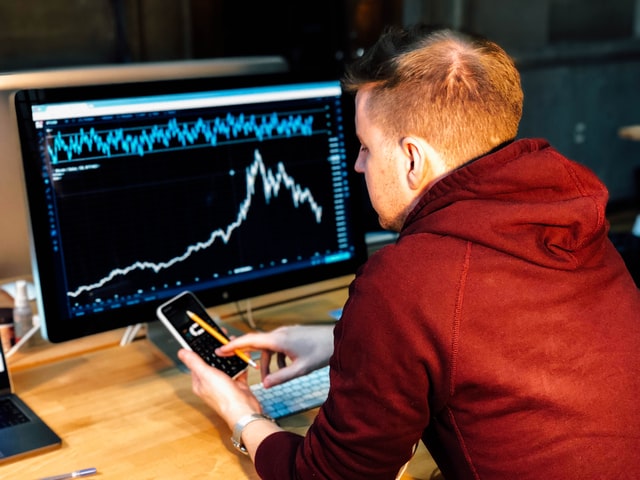
George:
-
First of all, what is your long term view on the dollar?
I'm assuming it's down but I don't want to put words in your mouth, and…
-
How would you juxtapose that position to Brent Johnson and all of the fantastic things that he brings up when you look at the debt, the dollar-denominated debt outside of the United States.?
Jesse Felder: Brent's a friend of mine and I have a ton of respect for him but we just disagree on the dollar.
He's also another person who thinks stock prices go way higher over the next few years and I disagree with that too. My investment framework comes down to three or four things.
It's really fundamentals, sentiment and technicals, and there's also macro you can throw in there too. Todd Harrison has called these the four pillars of investing or trading.
So for me, what's the fundamentals for the dollar? The fundamental is that it's pretty significantly overvalued against almost any other currency on the planet.
Take your pick, euro, yen, Chinese yuan. These things are all dramatically undervalued relative to the dollar.
Whether you look at something like the Big Mac Index or any type of purchasing power parity, the dollar is overvalued, significantly overvalued, but the other major fundamental for the dollar is the U.S. fiscal situation.
You look at the direction of the dollar in the last 25 years and it's very highly correlated to the fiscal deficit relative to GDP, the last time we had a surplus was in the late 90s, early 2000s, that was when the dollar hit a major peak.
When the .com bust happened, there was a big hole in tax revenues, the deficit blew out and the dollar rolled over into a major bear market that didn't end until 2009-2010 when the deficit was blowing out as a part of the financial crisis.

So the deficit over the last couple years went over a trillion dollars, and it's the first time since 1968 that we've had a significant fiscal deficit in the middle of an economic expansion, or at least during an economic expansion.
George: It's the greatest economy of all time, Jesse. Don't you know that?
Jesse Felder: Exactly, but in '68 it was because of the Vietnam War and other things that Nixon was doing and we only had a deficit of 2, 2.5% of GDP It hit 5% last year and so this is twice as big as the Nixon precedent.
What happened after '68? There were other things going on, but that fiscal profligacy ended up in rampant inflation for the next 10+ years.
We saw this blowout in the deficit over the last couple years and now it's making the last couple years look like nothing.
This trillion-dollar deficit is turning into a three trillion-dollar deficit. We're going to hit 18 or 20% of GDP on the deficit, something that we haven't seen since World War II.
So to me, this is a very, very bearish fundamental for the dollar.
It couldn't be more bearish, and if the dollar does follow the deficit as a major fundamental, the dollar is on the verge of another bear market. That's what I said, I think a 40% decline over the next three to five years is not at all out of the question.
Yeah. We can get into sentiment and technicals too, but to me, the fundamentals are the primary thing to watch for the long term.
George: So the bottom line is we've got a lot of cross-currents with anything, especially in macro.
So you understand Brent's position and the fundamentals he's talking about with his dollar-denominated debt outside the United States.
But you just think the deficits, they're going to have to print so much money, they're going to peg the yield curve, that's just going to have more power than the other cross-current of the dollar-denominated debt?
Jesse Felder: Yeah, there's this idea that I've heard Brent and some others talk about is that this essentially represents a huge short position on the dollar.
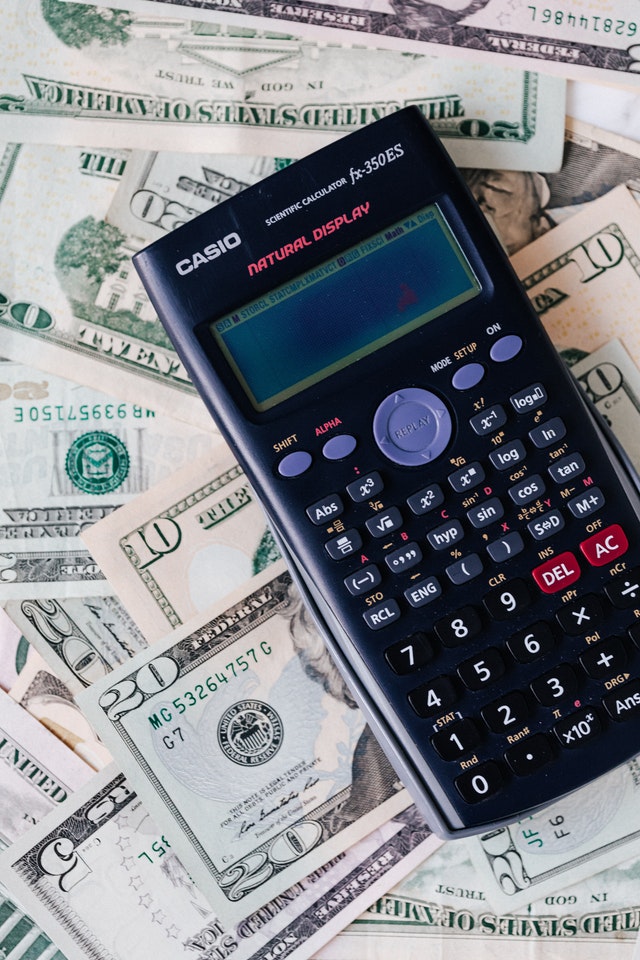
This overseas debt that has to be covered, paid back, they need dollars to pay it back.
The one distinction I would make between a short position and debt is that a short position has to be bought back, your broker will buy you in at some point if you run out of money.
Debt doesn't have to be paid back. Debts a lot of times don't get paid back, and I think that's probably what will happen.
People who are owing money in dollars are just not going to ever buy those dollars back. So it's not technically a short position in my view and I think that's the flaw of that argument.
George:
Just going back a little bit here, we were talking about how the projections, the forecasts for the next 10 years, are negative for the stock market when you look at the Buffett Indicator and possibly the CAPE ratio as well.
-
How do you think corporate taxes play into that?
Because when I look at the 2020 election, let's just assume for a moment that Trump doesn't get re-elected.
If you've got someone on the left coming in, assuming they take corporate taxes up to where they were and then maybe they increase the capital gains tax…
-
How would that play into corporate profits first and foremost? and then how would that affect the market and how they see the future earnings and therefore the entire S&P?
Jesse Felder: Well, I mean it's a good question that comes back to this Buffett quote that I was talking about.
The reason the Buffett Yardstick has been able to go to record highs and surpass those we saw during the dotcom mania is because it's basically like a price to sales measure.
The reason that it looks so much more expensive than some price to earnings measures is that corporate profit margins have expanded to their widest in history, this is the opposite of that labor share of income that I was talking about before.
So labor share has gone down to record lows, corporate profits have gone up to record highs, and so part of that is the globalization dynamics.
Where labor costs have just been able to go way down and stay down but part of it is corporate taxes, part of it is interest rates, all these things play into corporate margins going to record highs.

So I do think that with record-high profits, you have to be extremely careful at looking at a basic price to earnings ratio because it assumes profit margins are going to stay at record highs forever.
Jeremy Grantham has called profit margins the most mean-reverting series in finance, now that's not proven to be true over the last 20 years, profit margins have stayed really high.
But like I said there are tons of these forces that look like profit margins are going to have to come way down and labor share is going to go way up over the next 10 years. Part of that is probably taxes.
How are we going to pay for all this new debt? It seems to me that it's only logical that politicians, whether you're right or left.
The left wants to do it right away, but the right's going to be forced to do it at some time which will raise taxes on corporations because the tax cuts from a couple years ago lowered the corporate tax rate to the lowest in history.
So when we're looking for how do we raise revenue, it's going to be part of that, but there's also this de-globalization that is also going to affect corporate profit margins as labor share comes back.
Then if we get inflation rising, interest rates rising, the cost of capital for corporations is also going to put pressure on profit margins.
If it turns out that today's S&P 500 earnings or yesterday's, is $150.00, $180.00 a share, are completely unsustainable because of profit margins, and that earnings 10 years from now are going to be the flat to this or even lower.
Then what kind of a multiple do you put on those? You certainly don't put a record high multiple on earnings that have been flat for 10, 20 years, and are going to stay low because of reverting corporate profit margins.

Nobody's really paying attention to this except for when I saw Ray Dalio a couple years ago Bridgewater wrote an interesting piece on why they believe profit margins are just beginning to revert to a mean and that's going to be a major headwind for equity prices going forward.
If you’re interested in learning what I’m offering you about principles and how the world is unfolding in light of them, you can find out here: https://t.co/6DkbGiZ9Dw
— Ray Dalio (@RayDalio) July 29, 2019
Jesse Felder: So this is what the Buffett yardstick is telling us. It tells us in a much simpler way that returns are probably going to be negative in stocks over the next 10 years.
And I guess how to explain that is profit margins are going to revert to a mean, if that happens, then today's prices are going to look extremely expensive and that's what the Buffett yardstick is showing that PE measures don't really show.
George: Right, and then the person with the rebuttal would say, “Jesse but it just doesn't matter because even though you take the PE, you take the fundamentals, it's all about liquidity, it's all about the Fed printing money or bank reserves.”
Then your response to that, I would assume would be at some point the Fed's not going to be able to do that because inflation is going to prevent them.
But then can they just allow inflation to run hot and just say, “Forget it, we're not going to worry about it, we're just going to keep printing money regardless of the rate of inflation.”
Fed’s Intervention Races To Boost The Markets

Jesse Felder:
I think there are two answers to that. One is the Fed is now in a race with the Treasury, the Fed has to print more money than the Treasury needs in order to boost the markets.
That's the net liquidity. So if the Treasury has to issue $3 trillion of new debt this year to fund this fiscal deficit, the Fed is going to have to print at least that much and at a sustainable pace.
They have expanded the balance sheet $3 trillion, so that's kind of what Stan Druckenmiller was talking about a couple weeks ago.
That this huge expansion of $3 trillion in the balance sheet, created a huge liquidity in the short run but now that the Treasury is going to start needing that $3 trillion and the Fed's already tapering down to $60 billion a week, that dynamic is shifting.
If the Fed really wants to boost asset prices they're going to have to re-expand that quantitative easing, those asset purchases, to keep liquidity from going deeply negative over the next few months.
The other side of that is if the Fed decides to do that and says, “Okay, we're going to do whatever it takes to prop up the markets,” like I said I think the outlet for that is going to be the dollar.
And if you see the dollar start to roll over in response to the Fed's extreme interventionist policies, then inflation can pick up but a falling dollar is going to exacerbate all of those inflationary pressures where all the things we import from overseas become more expensive.
And the narrative is going to turn to the Fed is forced to monetize the debt, everybody get out of dollars, and that's when the Fed would maybe be forced to say:
“Okay, we can't just print all this money to fund the Treasury because we have to come and support the dollar at some point. We can't let it just crash to incredible lows because it will have too many negative implications for the dollar as a reserve currency and tons of other things.”
If the dollar starts tanking, the Fed will be forced to rethink a lot of these policies and say, “Well maybe we do have to rein in some of this money printing in order to support the currency.”
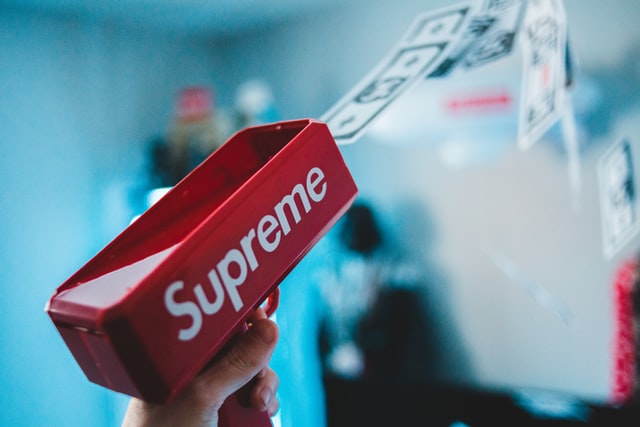
A lot of people say there's an unlimited amount of money printing the Fed can do. I would say it's limited by the amount overseas global investors are willing to hold dollars. At some point they'll say, “No no.”
My friend Bill Fleckenstein has said, “At some point, the bond market will take the printing press away from the Fed.”
Subscribe to https://t.co/S3xwMkqbih for Bill's market insights and the ability to submit your #AskFleck questions for the daily Q&A.
— bill fleckenstein (@fleckcap) October 11, 2018
I think at some point the currency markets will take the printing press away and people will just abandon dollars.
Keep An Eye On Insider Selling In Private Equity

George: Yeah, that's very interesting. I know you do a lot of research on insider buying and selling. Can you walk us through why that's so important and what you've seen over the last couple of months?
Jesse Felder: Yeah. I mean it's something I was introduced to early on in my career. It's legal insider trading.
I don't really pay much attention to institutional trading or even directors of companies buying and selling.
I want to see what the CEO's doing, what the CFO's doing, chief marketing officer, chief technological officer, these types of things. It was really interesting, in late March, we saw insider buying really soar.
There was tons of buying. It wasn't in the names that have been leading the market over the last few years though.
It's not been in any tech stocks, it's been a lot of these super deep value names and sectors, we saw a lot of buying in energy and energy has had a terrific run off the lows.
Since the market has rallied over the past two months plus, we've seen all that buying dry up, It's essentially gone away. I haven't really seen any buying to speak of over the last couple of weeks. We've seen a lot more insider selling.
My friend Asif Suria has a great website where he tracks a lot of this stuff, puts out a free weekly newsletter, it's called InsideArbitrage.com.
After writing about the merger arbitrage and insider trading strategies every week for over seven years, I am very excited to launch a new premium product on https://t.co/5G46LzAoqJ today: https://t.co/uR7OrRFxKe
— Asif Suria (@AsifSuria) January 22, 2018
He noted that Allegiant Air, a huge CEO just sold a ton of stock last week. We're seeing insider selling really take off again.
To me, some of the most interesting selling that I've been seeing is in some of the big private equity funds, so managers.
Apollo and Aries are two in particular where I ‘m just seeing private equity guys just unload their stock in their private equity firms which to me, that is a really, good signal for the credit cycle.
Apollo for example has gone from doing nothing in credit, all in just private equity, until the last 10 years getting into the credit market. It's one of the I think biggest shadow banks.
They went from 0 to $200 billion debt portfolios, so they have their finger on the pulse of the credit markets.
They see exactly what's going on in credit and these guys are selling like there's no tomorrow in a lot of cases which tells me that they don't expect a lot of these firms to survive.
There's going to be bankruptcies, the credit cycle has turned. There is really nothing the Fed can do about it and so I've been surprised to see very, very little talk about the insider selling in private equity right now.
Why You Shouldn't Rush To Short The Market
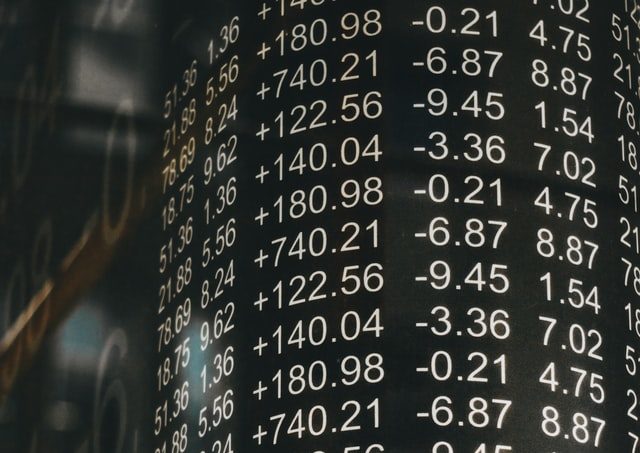
George: A lot of people listening to this will say, “Jesse, this is making total sense. I mean I need to run out right now and short the market as fast as I possibly can,” but I know you would maybe hesitate with encouraging them to do that. Can you expand on that?
Jesse Felder:
Short selling I like to say is the double black diamond of investing. It's the most difficult dangerous thing you can do in the markets because when you buy something you have limited downside and unlimited upside. Shorting something is the opposite
You have limited upside and unlimited downside and I've seen friends of mine blow up their accounts, blow up hedge funds with just one short position. It could be very painful.
Charlie Munger said about him and Warren Buffett, they don't short sell because they don't like trading agony for money.
I don't ever encourage anybody to try and learn how to short sell.
Some of these major growth stocks that people are flocking to are trading at their highest valuations in 10 years at the same time, their sales growth is plummeting and to me, that's just a recipe for a big decline in the stock market.
I see a lot of parallels to 2000, to the .com bust and I think that's probably what investors are looking at going forward up in the next few years, but short selling, very, very difficult.
I would encourage anybody who wants to learn to trade at all whether it's short selling, to create an account, a separate account, and put only an amount of money that you are willing to lose. Because sometimes you read about every great trader on the planet and they've all gone broke.
Paul Tudor Jones, for example, gone broke two, three, four times before they've actually figured out discipline and how to limit risk in those types of trades.
If it's something that people are interested in learning, just make sure you limit yourself in the amount you're willing to lose.
Then know that you're going to lose money and look at it as tuition at the school of trading. That's an important way to look at it.
George: Going back to your buddy Bill Fleckenstein who is one of the best short-sellers probably of all time, I have listened to a lot of his content as well and I know even in the last few years he hasn't gone short.
He's gone short by going long, gold and gold miners. So if he's doing that, maybe that's something the average Joe should consider doing as well.
I remember in your interview with Keith you talked about being kind of boots on the ground in the thick of things in 2000 and seeing the retail side get excited about the market.

But back then there were actual fundamental reasons, some macro drivers and comparing that to now, with these people, the millennials with their Robinhood accounts, are maybe doing the same thing but there are a lot fewer fundamental reasons to actually be bullish and this could really be dangerous right now.
Jesse Felder: Back in 2000, we had terrific productivity and economic growth, we had the invention of the internet which was essentially a new gold rush, it was very exciting and it was all real.
I mean those were real positive things for the economy, for corporations so there was this real driver of euphoria that we saw. I was the head trader at our hedge fund, we had our own broker-dealer.
I remember talking with guys that wanted to trade through our firm, for example, we had a guy who was a stuntman in Hollywood and he gave up his job as a stuntman to day trade.
I watched him turn his account, like grew up by three, four, fivefold in 12 months' time and think he was a genius and then lose it all in the bust.
At least then there was this real excitement. As Jeremy Grantham just pointed out, we're in the top maybe 1% of equity valuations in history and we're in the bottom 1% of economic outcomes in history.
It‘s the hugest dichotomy I think we've ever seen between the stock market and the economy, and in the midst of this, you have retail traders coming in, opening new accounts at Robinhood, Etrade, Ameritrade, all these places like never before.
And like my friend Jaso pointed out last week, at the peak in February, we saw these small traders buy seven million call options right before the crash.
Last weak they bought 12 million call options so the euphoria and the bullishness has even eclipsed what we saw back in February before the stock market crash.
I have no problem saying this is the craziest thing I've ever seen in my career.
Because the fundamentals for the stock market and the economy are so bad in the midst of this euphoria, it's really difficult to understand and explain.
The Social Media Influence That Has Millennials Taking Great Risks

George: You talked about another thing with Keith that was extremely interesting and that's the job market has been so poor for millennials over the past few years.
And they're seeing this potentially as just their only way out, like their only way to grow their wealth or to actually make a little bit of money or increase their purchasing power.
Can you expand on that and then I know you really have taken deep dives into the psychological effect of social media.
When you're talking about the millennials and what they're doing right now going to the market maybe because the job market isn't as good as it otherwise or it normally is.
How is that compounded by social media? Like Instagram, where they're seeing all these people post these pictures of the rented Lamborghinis, the champagne, hanging out with all the ladies.
Do you think that really exacerbates the willingness to take risks and to take that stimulus check from the government and go all-in on an oil ETF or an airline ETF?
Jesse Felder: I think it's a lot less millennials seeing that this is their only chance for some type of financial salvation, it's a lot more of the latter of what you've talked about.
I'm going to botch the J.P. Morgan quote but he said something like, “There's nothing that so undermines a man's ability to be rational as seeing his neighbor get rich.”
Come back to the housing bubble and you see so many people flip houses and pull equity out of their house and buy seven spec homes.
You see people making fortunes, that's what literally inspires so many other people to say, “Okay, I got to buy a spec house. I've got to leverage up my equity in my primary to get crazy and try and make more money.”

It's the same thing in the .com mania. We're seeing it now today, I guess there's this narrative out there, and Robert Shiller has written about this recently through his book Narrative Economics.
After the 2009 stock market crash, the rally was so strong and so powerful, I think we got back to those 2007 peaks in two years or something.
There's been this kind of narrative, this belief that these are terrific buying opportunities, whenever you see the stock market go down, you have to step in and buy because you'll always be made whole, the market will always come back.
It's this buy the dip mentality that has just become more and more ingrained in people's minds and the longer that it's been around, the more and more people feel like I have missed out, I have missed my opportunity to buy.
When the late 2018 market crashed into basically Christmas Eve I think bottomed, it came ripping straight back and we've seen it again now.
Market crash, fastest crash, one month, whatever it is, 10%, 20, 30% crash from a new high we just saw and the markets come, NASDAQ is now up above its peak.
So all of this action and the Fed's intervention has kind of ingrained in investors' minds that you have to buy the dip, and it's become so pervasive on social media as you mentioned.
Rana Foroohar who writes for Financial Times, wrote a great piece about it a couple weeks ago.
The fuss about JK Rowling https://t.co/ECjPBAJ5BV via @financialtimes
— Rana Foroohar (@RanaForoohar) July 14, 2020
Her 12-year-old son asked her if he could open up a Robinhood account because he wanted to buy the dip, I said, “12 years old.” She goes, “It's all over their social media. It's on TikTok. It's on all these different things.”
People talk about buying the dip and how they're making ungodly amounts of money. The Davey Day Trader is another just example of it.
You look at this guy and he's taking money out that he got out of selling Barstool Sports and he's put it into a day trading account
George: Yeah, I just saw that guy today. Yeah, Lyn Alden, I read her most recent research paper. I didn't even know he was a thing.

I looked him up on Twitter and I saw some of his most recent tweets and I said, “Wow, this isn't the biggest contrarian indicator I have ever seen.”
He's literally got tweets saying should I buy or should I sell. Stocks always go up.
Jesse Felder: Yes, #InfinityMoney, #thegreatestdaytraderwhoeverlived. All these people are watching him and going, “Oh my god. He is making $300,000.00 a day.
He made a million bucks today trading this trading account, buying Spirit Airlines, and what have you.” It's really to me reminiscent of Tokyo Joe.
There are these bulletin boards back in the day in the late nineties where guys who put up stock ideas and then you'd see the stock go nuts for the next week.
That's what we're seeing on Reddit, that's what we're seeing with Davey Day Trader. It's really reminiscent and it's this fear of missing out on a huge opportunity that is driving unbelievable.
We used to see maybe two or three million call options bought a week by these traders over time. Going back to 2000 we saw 12 million calls bought last week. It's completely off the charts.
Gold Is Still The Safest Commodity Option

George: Wow. Well, for the sake of time, we'll go ahead and leave it there. Actually, before we go Jesse, and I sincerely appreciate your time, this has been an incredible interview.
I know what your take on the dollar is. I am going to assume that you're bullish on gold but I don't want to put words in your mouth.
What do you think about precious metals, commodities, and Bitcoin?
Jesse Felder: Very bullish on gold longer term than the short run.
I think gold's probably due for a correction. Real interest rates are rising now which is not a good environment for gold but I do think longer term it could go much, much higher.
The problem I have with bitcoin is I agree with the crypto nerds, whatever you want to call them in every respect except that crypto is a store value. I do not believe crypto is a legitimate store of value.
I think gold is much better in that respect and really the only proven store value in an environment like this. Yeah, so bullish gold longer-term, kind of cautious short term, and no comment on bitcoin.
George:
What do you think of commodities? Oil, uranium, do you have a view on those?
Jesse Felder: Yeah, I mean commodities have never been so cheap relative to financial assets as they are today.
So if we're entering an environment over the next 10 years that's bad for financial assets, it's got to be relatively good for commodities.
I am bullish on oil, like I said there was a lot of insider buying in March and a lot of the energy names. I do think that will be a good investment over the longer term.
As for a lot of the other commodities, to me, gold and oil are probably my two favorites, the ones I'm most comfortable with, but I probably think that the rising tide floats all boats over the next 10 years.
George: Okay, fantastic. For any of my viewers who want to find out more about what you do Jesse, where can they go, and please give the URL for the blog.
I don't know if there's a specific URL for that because that is just absolutely amazing. I loved reading it today.
Jesse Felder: Yeah, thanks. I do spend a lot of time on Twitter. To me, it's a beautiful place to watch sentiment unfold in real-time in the markets.
My Twitter handle is @JesseFelder and basically I just tweet a lot of the stuff that I'm reading. A lot of the trends and things that I'm following.
The blog is TheFelderReport.com. I try and put up a blog post there once a week and a podcast on occasion.
George: Okay Jesse. Thank you very much and I can't wait to do it again.
Jesse Felder: Yeah, thanks, George.

